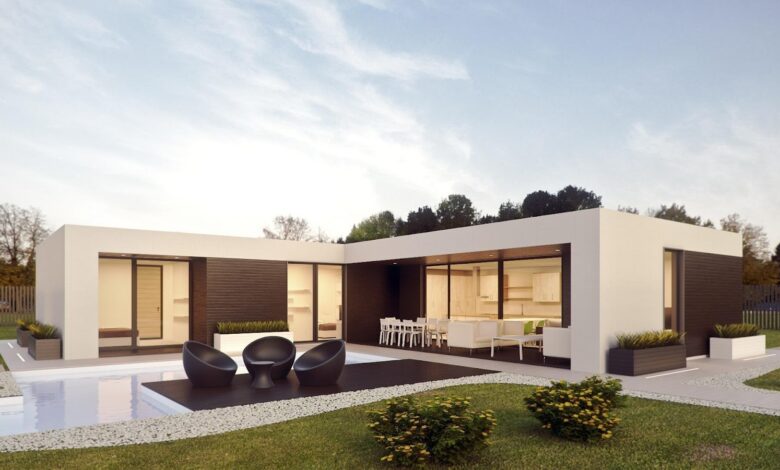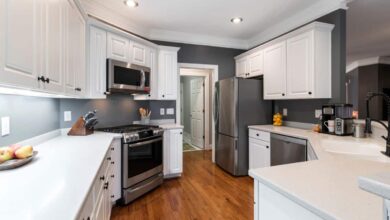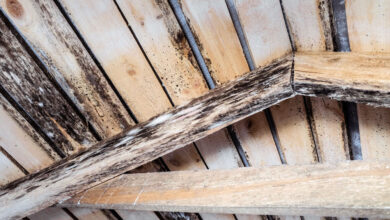How to Choose the Best-Rated Exterior House Paint for Your Home

When it comes to enhancing the curb appeal and protecting the exterior of your home, selecting the best-rated exterior house paint is crucial. With an overwhelming variety of paint options available in the market, making the right choice can seem daunting.
This comprehensive guide will explain everything you need to know to choose the best exterior paint for your home, ensuring durability, aesthetic appeal, and protection for years to come. Read on!
Understanding The Importance of Quality Exterior Paint
The decision between quality and cheap options can significantly impact the longevity and appearance of your home. High-quality exterior house paint generally offers superior durability and better resistance to harsh weather conditions, such as UV rays, rain, and temperature fluctuations.
This means that a quality paint job can last longer, often up to a decade or more, without showing signs of peeling or fading. Additionally, premium paints usually have better coverage. This means fewer coats are required, saving time and effort in the long run.
On the other hand, cheap house paint might seem like a cost-effective solution initially, but it often requires more frequent touch-ups and repaints. It may also not protect your home as effectively, leading to potential damage from the elements.
Investing in quality exterior paint can thus provide the following benefits:
- better protection
- aesthetic appeal
- long-term savings
Choosing the best-rated exterior house paint ensures these benefits, making the investment worthwhile.
Key Factors to Consider
Choosing the right external paint color for a house depends not only on personal preference but also on the climate of the area. Here are factors to consider when selecting the best exterior paint for your home.
Climate
In hot climates, lighter shades such as whites, creams, and pastels are preferable because they reflect sunlight, helping to keep the home cooler and reduce energy costs.
Conversely, in colder climates, darker shades like navy, forest green, and deep red can absorb more heat, potentially lowering heating expenses.
The durability of the paint in response to humidity, UV exposure, and temperature fluctuations should be considered to ensure the color remains vibrant and the paint performs well over time.
Surface Type
The surface of your house will also influence the type of paint you should use. Choose a paint that offers flexibility and can adhere to various materials such as:
- wood
- stucco
- brick
- vinyl
Also, consider the texture of the surface. Smooth surfaces tend to reflect light more evenly, making them ideal for lighter shades. Textured surfaces may benefit from deeper hues to create contrast and add dimension.
Finish
The finish of your exterior paint affects both the look and durability of your home’s exterior. Some common finishes include:
- flat/matte
- satin
- semi-gloss
- gloss
Flat or matte is a non-reflective finish that works well on older homes or surfaces with imperfections. Satin, on the other hand, is a low-luster finish that offers a smooth and easy-to-clean surface, making it ideal for high traffic areas.
Semi-gloss offers a shiny finish that is highly durable and moisture-resistant, perfect for areas prone to getting wet. While gloss offers the shiniest and most durable option, best suited for areas exposed to extreme weather conditions.
Color Choice
The color painting of the house plays a significant role in its overall appeal. The right color can enhance the architectural features of your home and make it stand out in the neighborhood. A poor color choice can make your house look dull and uninviting.
Consider the style of your home, the surrounding landscape, and any homeowner association rules or regulations. Keep in mind that lighter colors tend to make a house appear larger while darker colors can give off a more formal or sophisticated vibe.
Popular House Painting Ideas
Check out these popular house painting ideas. Remember that trends come and go, so choose a timeless color that you will love for years to come.
White Painted Brick House
A white-painted brick house exudes timeless elegance and modern simplicity. White paint can brighten up older brick homes, giving them a fresh and clean look. It also allows the architectural details of the brickwork to stand out, creating a harmonious balance between traditional and contemporary aesthetics.
Gray Exterior House Paint Ideas
Gray has become one of the most popular choices for exterior paint, offering a sophisticated and versatile look. It provides a dramatic and bold appearance, especially with contrasting white trim. It also delivers a more subtle and modern look, perfect for a minimalist aesthetic.
Choose grays with blue or green undertones for added depth and personality.
Green House Paint Options
Green house paint adds a touch of nature and freshness to your home’s exterior. It works particularly well in homes surrounded by lush landscapes. Consider various shades of green:
- sage green
- olive green
- forest green
Sage green offers a muted, earthy tone that blends well with natural surroundings. Olive green offers a warm, timeless look. Lastly, Forest green creates a bold, striking appearance that makes a statement.
Tips for Selecting the Best-Rated Exterior House Paint
When it comes to choosing exterior house paint, there are a few things to keep in mind.
Read Reviews
Customer reviews and expert ratings can provide valuable insights into the performance and durability of different paint brands. Look for paints with consistently high ratings and positive feedback.
Check the Warranty
Top-rated exterior paints often come with extended warranties, reflecting the manufacturer’s confidence in their product’s durability. A good warranty can offer peace of mind and added value.
Consider Professional Advice
Consulting with a professional painter or a local paint retailer can provide personalized recommendations based on your specific needs and conditions. For more information to see a variety of painting styles and finishes, visit https://freshcoatpainters.com/locations/cascade.
Test Samples
Before committing to a large purchase, test paint samples on a small section of your house. This allows you to see how the color looks in different lighting conditions and how well it adheres to your home’s exterior.
Find Your Perfect Palette and Select the Best Exterior House Paint
Choosing the best-rated exterior house paint involves considering numerous factors, including climate, surface type, finish, and color. Whether you prefer the classic look of a white-painted brick house, the modern appeal of gray exterior house paint ideas, or the refreshing touch of green house paint, the right choice can significantly enhance your home’s curb appeal and protection.
By reading reviews, testing samples, and consulting with professionals, you can ensure you select a high-quality paint that meets your needs and stands the test of time.
Feel free to visit our blog for more content like this.



